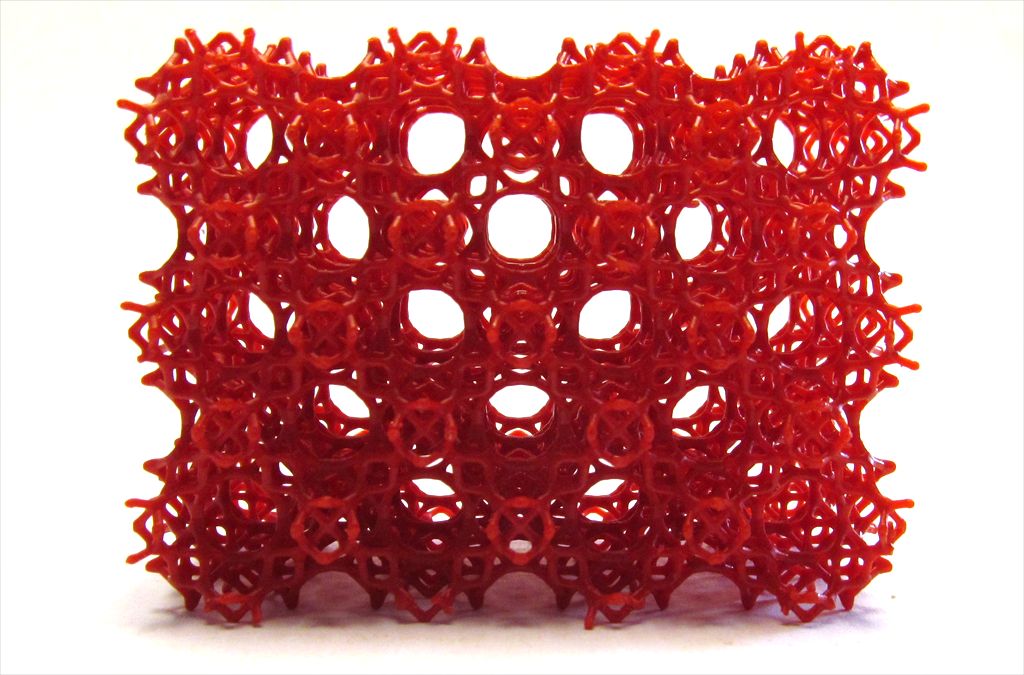The main aim of industrial prototyping is to create a tangible representation of an arbitrary digital geometry. Industrial fabrication is generally tuned for a specific object and the initial setup is usually a time consuming operation. The more complex the shape of the object, the more complex is the manufacturing process. Obviously, implementing a similar process to create a single (or a few) prototype(s) is not efficient.
To deal with these specific industrial needs 3D printing devices have been created for the small scale production of arbitrary shapes. This class of technologies is usually referred to as digital fabrication or 3D printing.
Several 3D printing techniques have been created for the small-scale production of digital shapes. The main advantage of 3D printing is that the manufacturing process does not depend on the geometric complexity of the fabricated object. This considerably reduces the gap between digital design and physical creation.
The Visual Computing Laboratory of CNR-ISTI started a research effort and experimented the potential of 3D printing, mostly but not only in the Cultural Heritage (CH) domain. We mention here a few recent papers concerning: the production of large size replicas on 3D printers having a fixed and small working space; a new methodology for the production of aesthetic replicas (patented in 2015); and a tutorial on features and limitations of 3D fabrication technologies for CH applications (see recent publications at: http://vcg.isti.cnr.it/Publications/ ). But we would present and discuss in the following only a single recent result.
The potential of 3D printing goes far beyond rapid prototyping. Fabricating complex structures, aside from potentially reducing costs, open up many new possibilities, in particular for manufacturing deformable objects. By varying a small-scale structure, one can adjust a variety of material properties, from elasticity to permeability. Importantly, these properties can be varied nearly continuously over the object, something that is not commonly done in traditional processes. This opens up many new possibilities for producing objects with a prescribed behavior.
In a very recent paper (Siggraph 2015 and ACM Trans. on Graphics) we proposed "Elastic Textures", a novel paradigm for the design of custom elastic properties of printed objects. Elastic textures is a library of tileable parameterized 3D small-scale structures that can be used to freely control the elastic properties of an object without changing the used material. Applying such textures to a solid hexahedral mesh with target material properties specified per element is similar to using dithering to achieve a continuous variation of brightness or color.
We have been inspired by the following observation: almost all material properties owe themselves to small-scale structures at the molecular or crystal level, and a large body of work in nanoscience aims to control material properties precisely by structure design.
Elastic Textures allows to maximize the range of effective material properties that can be obtained using a single material, by varying the structure of the solid internal space at modelling time.
We considered variable-thickness truss-like structures, i.e. structures composed of connected bars as these cover a considerable range of properties on the one hand, and on the other hand, allow us to work with a relatively small number of parameters. We proposed a method for building a dictionary of structures that cover a large space of material properties. These structures are tileable, which makes it possible to vary material properties across an object, and printable.
We demonstrate the application of our elastic textures in two settings: painted material properties and specified deformation behavior. All printing was done using an inexpensive (5k Euro) off the shelf 3D printer.
Immagini:

